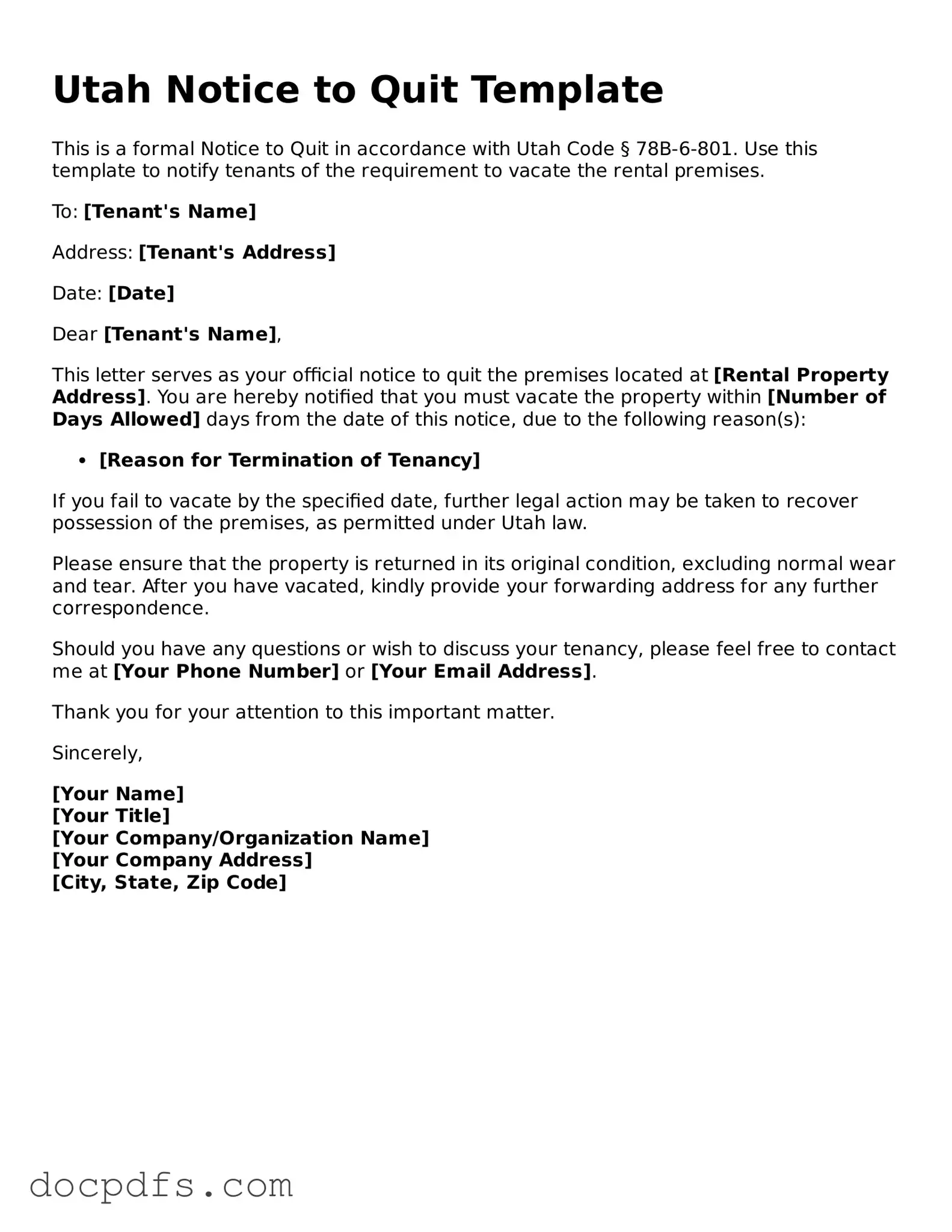The Utah Notice to Quit form is a legal document used by landlords to formally notify tenants that they must vacate the rental property. This notice is typically issued when a tenant has violated the terms of the lease agreement, such as failing to pay rent or engaging in illegal activities. The form serves as a preliminary step before a landlord can initiate eviction proceedings.
When should a landlord issue a Notice to Quit?
A landlord may issue a Notice to Quit under various circumstances, including but not limited to:
-
Non-payment of rent.
-
Violation of lease terms.
-
Engagement in illegal activities on the premises.
-
Failure to maintain the property or causing damage.
It is essential for landlords to provide this notice to ensure they follow the legal process before pursuing eviction.
The Notice to Quit should contain specific information to be legally valid. This includes:
-
The date the notice is issued.
-
The tenant's name and address.
-
A clear statement of the reason for the notice.
-
The time frame in which the tenant must vacate the property.
-
The signature of the landlord or authorized agent.
Providing complete and accurate information helps avoid potential disputes later in the eviction process.
How much time does a tenant have to respond to a Notice to Quit?
The time frame for a tenant to respond to a Notice to Quit varies depending on the reason for the notice. Generally, tenants may have:
-
Three days to vacate for non-payment of rent.
-
Fourteen days for lease violations.
It is crucial for tenants to read the notice carefully and understand the specific time frame applicable to their situation.
Can a tenant contest a Notice to Quit?
Yes, a tenant has the right to contest a Notice to Quit. If a tenant believes the notice is unjust or the claims made are inaccurate, they can respond in writing to the landlord. Additionally, if the matter escalates to eviction proceedings, the tenant may present their case in court. Legal advice is often beneficial in these situations.
What happens if a tenant does not comply with the Notice to Quit?
If a tenant fails to comply with the Notice to Quit within the specified time frame, the landlord may proceed with eviction proceedings. This typically involves filing a complaint with the local court and obtaining a judgment for eviction. Tenants may face additional consequences, including potential financial liabilities for unpaid rent or damages.
Is a Notice to Quit the same as an eviction notice?
No, a Notice to Quit is not the same as an eviction notice. The Notice to Quit is a preliminary document that informs the tenant of the need to vacate the premises. An eviction notice follows if the tenant does not comply with the Notice to Quit and legal proceedings are initiated. Understanding the distinction is important for both landlords and tenants.
